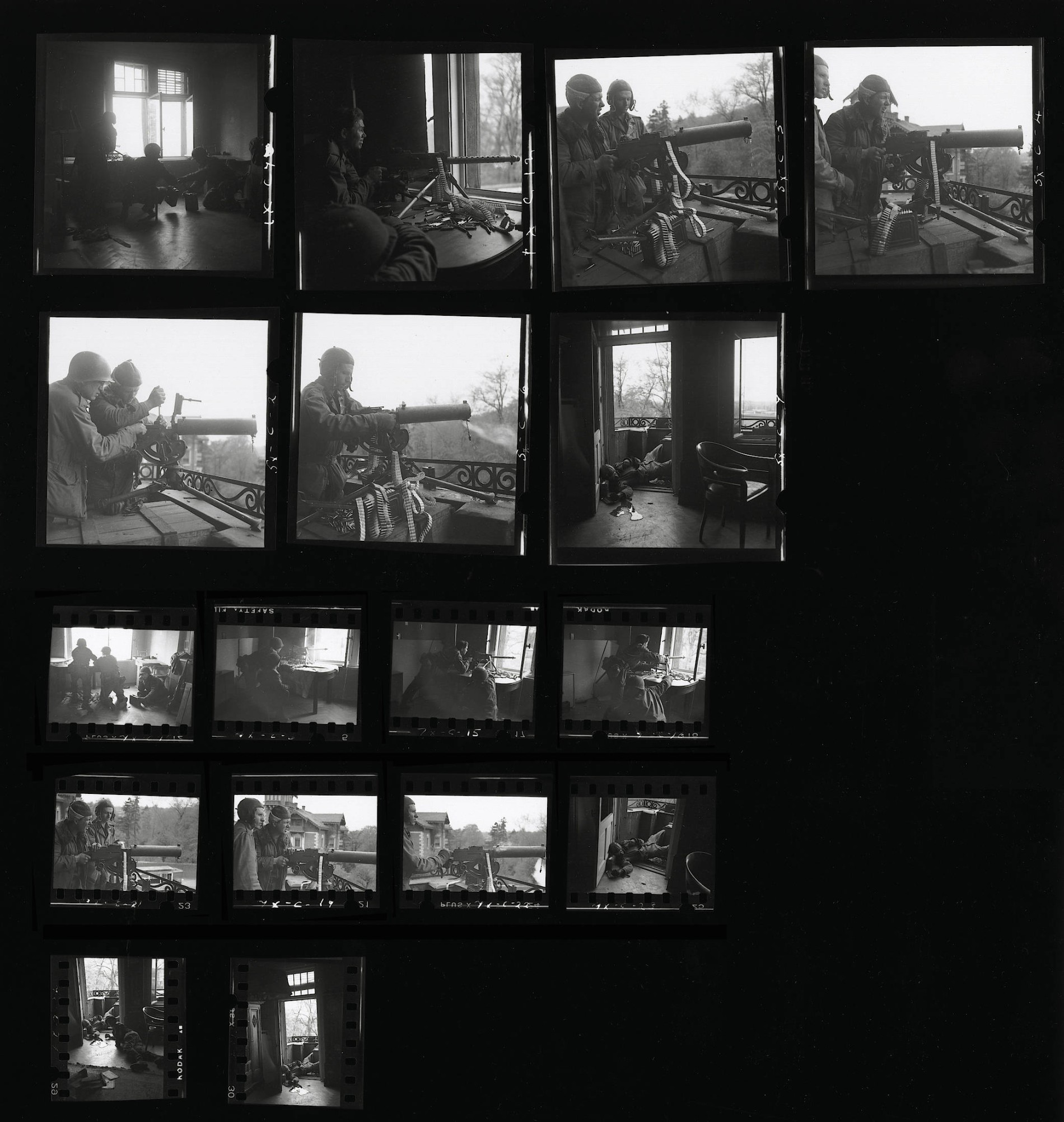
.
His biographer called them “the most gruesome photographs of [Robert] Capa’s entire career.”
On the floor of a Leipziger apartment, 21-year old Raymod J. Bowman lay dead, a German sniper’s bullet clean through his forehead. His legs were splayed out onto the balcony from which he had been firing a machine gun, his head and arm twisted on the wooden floor of the apartment he has been knocked back into, a small puddle of blood streaming out of him.
It was April 1945. The war was coming to a close. Bowman and another soldier, Lehmann Riggs, had set up a .30 caliber Browning machine gun on the balcony to provide cover for the 2nd US Infantry Division which was advancing across a bridge over the Elster. Together with them was Robert Capa, who had been embedded with the troops since the Normandy Landings. He was just a few feet away when Bowman was fatally shot.
Capa almost decided not to take the photo. In a rare radio interview in 1947, the famed war photographer remembered:
“He’d just moved on to the open balcony and put up that heavy machine gun. But God, the war was over, who wanted to see one more picture of somebody shooting?
“So it made no sense whatsoever but he (Bowman) looked so clean cut and he was one of the men who looked like if it would be the first day of the war he still was earnest about it … So I said: ‘All right, this will be my last picture of war.’
And I put my camera up and took a portrait shot of him, and while I shot my portrait of him he was killed by a sniper. It was a very clean and somehow a very beautiful death.”
.

.
The photos were published in the May 14, 1945 issue of Life magazine, under the headline “Americans Still Died,” but in Leipzig, the photo was not particularly famous.
After a hard fought battle in April — fighting was often house-to-house and block-to-block – the Americans turned the city over to the Red Army as zones of occupation were drawn up in July 1945. The Americans’ role in liberating Leipzig was written out of official histories where it was the Red Army that had saved the city — and Germany – from Nazism.
Capa’s photos only circulated secretly. For instance, Snowboy Magazine, an underground magazine, republished them, using the copies that were photographed illegally from Deutsche Bücherei (East Germany’s national library) which kept them in a forbidden books section, called ‘Giftschrank’ (poison cabinet). Finally in 2015, the apartment building were Bowman was killed was saved from demolition and two streets abutting it were renamed Bowmanstraße and Capastraße. The building, now called Capa House, contains a small memorial with Capa’s photographs and information about Bowman.
.
If you like what I do and what I write, or simply wants me to write more, you can support me via Patreon. I had tremendous fun researching and writing Iconic Photos, and the Patreon is a way for this blog to be self-sustaining. Proceeds mainly go to buying photography reference books. Readers who subscribe on Patreon might have access to a few blog posts early; chance to request topics or to participate in some polls.
Thanks for your continued support! Here is the link:
Wh
Really glad that you are posting regularly again, I’ve been reading everything and sending it to other people, thank you!